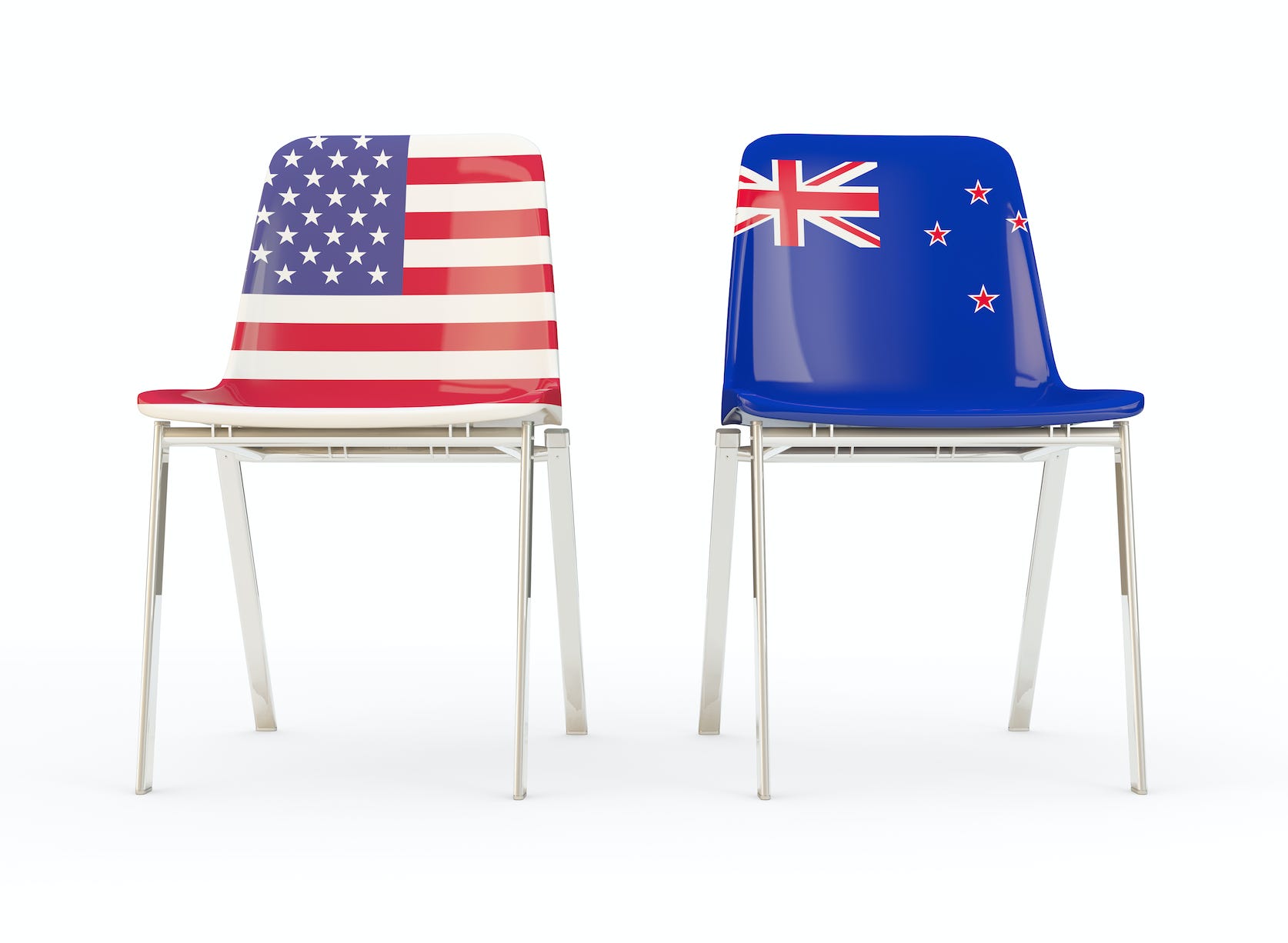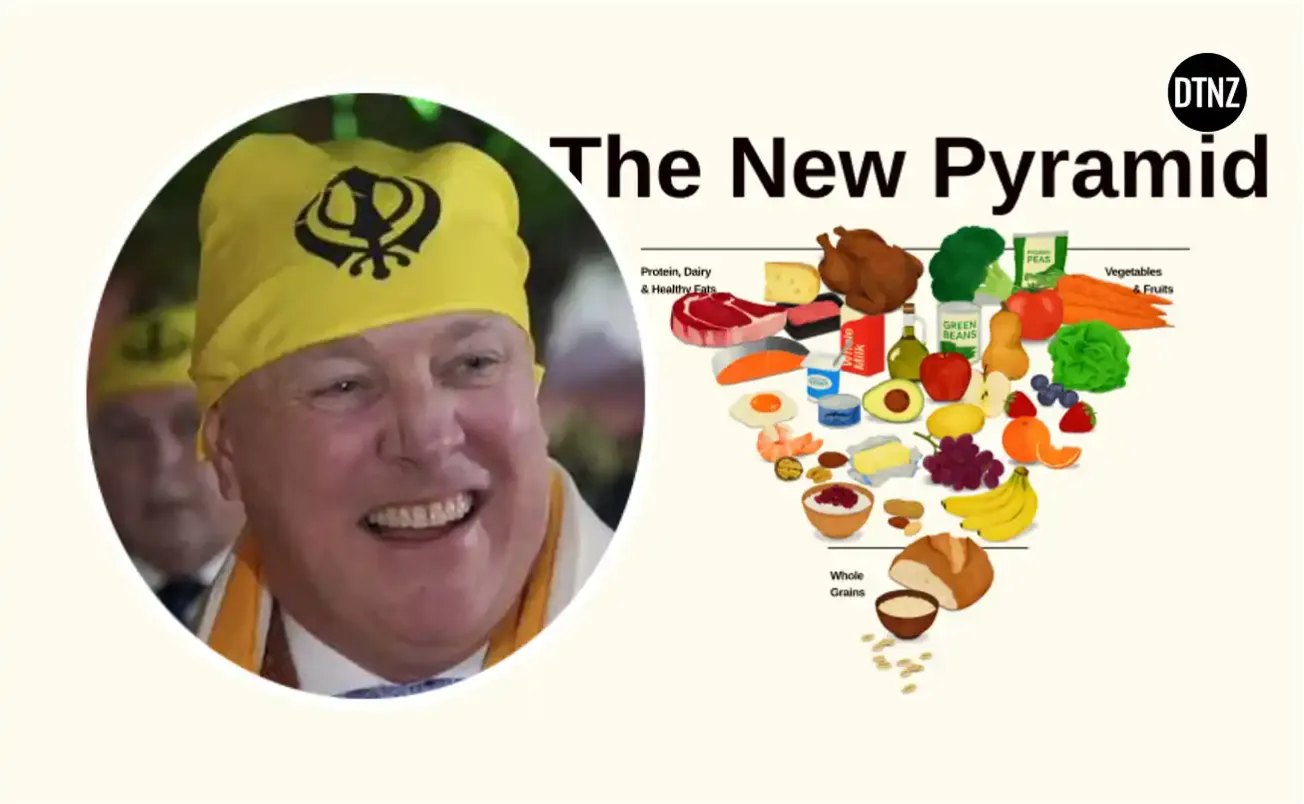Table of Contents
Republished with Permission
Geoffrey Miller
Geoffrey Miller is the Democracy Project’s geopolitical analyst and writes on current New Zealand foreign policy and related geopolitical issues. He has lived in Germany and the Middle East and is a learner of Arabic and Russian. He is currently working on a PhD at the University of Otago on New Zealand’s relations with the Gulf states.
Change is coming to America.
Next month’s elections are likely to pave the way for an overhaul of US foreign policy – regardless of whether Donald Trump or Kamala Harris wins the presidency.
Decisions made in Washington will also have a direct impact on Wellington. While the Biden administration started its term with a strong, even dominant, focus on the Indo-Pacific, Washington has inevitably become preoccupied by turmoil elsewhere – most recently in the Middle East, where a wider regional war centred on Iran and Israel is arguably already underway.
One year on from the October 7 attacks by Hamas, there is some suggestion that Harris would take a harder line on Israel than Joe Biden if she is elected as president. In her acceptance speech at the Democratic National Convention (DNC) in August, Harris said ‘the scale of suffering is heartbreaking’. She added that Palestinians deserved to ‘realise their right to dignity’ and achieve ‘self-determination’. Harris also skipped Israeli Prime Minister Benjamin Netanyahu’s address to Congress in July. And a leaked draft of a speech she gave in March reportedly suggested that Harris wanted to make more critical remarks of Israel than she was ultimately allowed to deliver.
However, the jury is still out on the extent to which Harris truly differs from Biden. After all, in the DNC speech, she also declared ‘I will always stand up for Israel’s right to defend itself and I will always ensure Israel has the ability to defend itself’ – language that would not seem out of place in a speech by Joe Biden, or even Donald Trump. And Harris still met with Netanyahu privately in July – hardly giving him the cold shoulder.
For his part, Trump appears to be straightforward, casting himself as a ‘protector’ of Israel and depicting Iran as the root cause of the wars and instability that are plaguing the region. His pledge in September’s TV debate of ‘I will get that settled and fast’ is almost certainly more of a reference to a desire to use crushing military might than to employ negotiations.
While ongoing turmoil is likely to ensure the Middle East remains the primary geopolitical theatre in the near-term, the picture is more nuanced when it comes to Ukraine.
That war may be entering its endgame – regardless of who wins the presidency. At the DNC, Harris simply said ‘as President, I will stand strong with Ukraine and our NATO allies’. This sounds firm, but it is also vaguer than the ‘as long as it takes’ messaging that was used earlier in the war, including by Harris herself as recently as February. And in the recent TV debate, Harris largely preferred to talk about her record in past support for Ukraine than what she would do in the future.
If Harris is likely to try and gradually wind things up, Trump is even less invested in Kyiv’s cause. His lines in the TV debate of ‘I want the war to stop’ and ‘I’ll get the war with Ukraine and Russia ended’ – along with references to personal relationships with Vladimir Putin and Volodymyr Zelensky – underline the preference for dealmaking. The Trump version of this negotiated outcome is likely to be faster and less favourable to Ukraine.
Still, both candidates will be influenced by what happens on the battlefield over the coming months. If Kyiv’s incursion into Kursk bears fruit and Ukrainian losses elsewhere such as the town of Vuhledar remain the exception, the US and its allies may be persuaded to back Ukraine for a little longer. Other actors will also matter, whether allies – Germany is seeking to cut its military aid for Ukraine by half – or Congress, where a $US61 billion funding package for Ukraine in April succeeded only after lengthy horsetrading and the inclusion of a potential TikTok ban to target China.
This brings us to the Indo-Pacific region – the third theatre – and New Zealand. Under the Biden administration, Wellington has moved steadily towards Washington in the way it sees the world. This shift accelerated hugely after Russia’s invasion of Ukraine in February 2022. In the immediate aftermath of the invasion, New Zealand introduced unprecedented autonomous sanctions against Russia, sent troops to Europe to support the war effort and forged closer ties with NATO.
The new thinking was also fuelled by news of a security pact between China and Solomon Islands that was signed in April 2022. The following month, Jacinda Ardern headed to the White House and signed New Zealand up to a lengthy joint statement with the United States that warned that ‘a persistent military presence in the Pacific by a state that does not share our values or security interests would fundamentally alter the strategic balance of the region’.
Since that May 2022 visit, New Zealand has joined new US vehicles aimed at countering China’s influence such as the Indo-Pacific Economic Framework (IPEF) and Partners in the Blue Pacific (PBP). Existing structures have also been strengthened and given new meaning, including the Pacific Islands Forum. And a parade of senior US officials have visited New Zealand, including Kurt Campbell, now the Deputy Secretary of State and previously the White House’s Indo-Pacific coordinator.
The alliance-focused approach has been a hallmark of Joe Biden generally, whose formative experiences came during the Cold War. In Ukraine, NATO’s role has been central, while in Asia, a wider range of ‘minilaterals’ have been stress-tested. These include the Quad (Australia, India, Japan and the US), but also US-Japan-South Korea and US-Japan-Philippines summits. Then there are also existing structures such as ASEAN, APEC and the East Asia Summit. Kamala Harris has attended gatherings for all three of these formats, the latter two of which also include China.
Of all of these initiatives, AUKUS probably represents the centrepiece of Washington’s efforts in the Indo-Pacific. Initially launched in 2021 as nuclear-powered submarine building project for Australia, AUKUS has morphed into a wider concept that constitutes the most hawkish element in Washington’s response to Beijing. With particular encouragement from Kurt Campbell, New Zealand has slowly but surely crept closer to AUKUS. After Christopher Luxon became Prime Minister in late 2023, New Zealand’s position shifted to ‘exploring’ potential involvement in the supposedly non-nuclear ‘Pillar II’ component of the pact.
The process has also been helped by the fact that New Zealand’s current foreign minister, Winston Peters, is particularly amenable to Washington’s desire to forge closer ties with Wellington. The most recent development came in mid-September, when AUKUS leaders announced the beginning of formal consultations with New Zealand (as well as with Canada and South Korea) ‘to identify possibilities for collaboration on advanced capabilities under AUKUS Pillar II’.
It is unlikely to be a coincidence that this announcement came just a few weeks after Kurt Campbell made another visit to New Zealand. Campbell, who recently called China’s rise ‘the most significant challenge in our history’, is a particularly influential figure and long-term architect of US strategy to counter Beijing. Campbell has risen steadily through the ranks and reportedly gets on well with Kamala Harris. If Harris wins, he could potentially become the next US Secretary of State – or at least receive another senior role – putting him in pole position to conclude the expansion of AUKUS. New Zealand would probably move quickly to join Pillar II under this scenario.
If Donald Trump claims election victory, Campbell will be watching from the sidelines. But AUKUS itself could well survive, despite being closely associated with Biden. After all, the Trump administration successfully repurposed an existing vehicle in its first term, the Quad, to challenge China. In the same vein, AUKUS could easily be reshaped in Trump’s more bombastic and aggressive image.
New Zealand is already factoring both election outcomes into its calculations, judging by the delay of a new ‘Defence Capability Plan’ until after the US election. Foreign minister Winston Peters, the leader of the New Zealand First Party and cut from a more populist cloth, would probably be happy to continue with AUKUS under Trump.
But it would be a different story for Prime Minister Christopher Luxon, who prefers to cultivate a more moderate centre-right image.
Moreover, if Trump’s testy relations with NATO are anything to go by, New Zealand would probably be expected to contribute far more to a Trump-led AUKUS – in terms of defence spending, personnel contributions and hawkish rhetoric.
For New Zealand, which has traditionally enjoyed good relations with Beijing and relies on China as its biggest export market, this would carry enormous risks.
AUKUS is already an anti-China vehicle, but Donald Trump would take it to the next level.
New Zealand might continue to align itself more closely with the United States.
But it would come at a cost.
This article was originally published by the Democracy Project.









